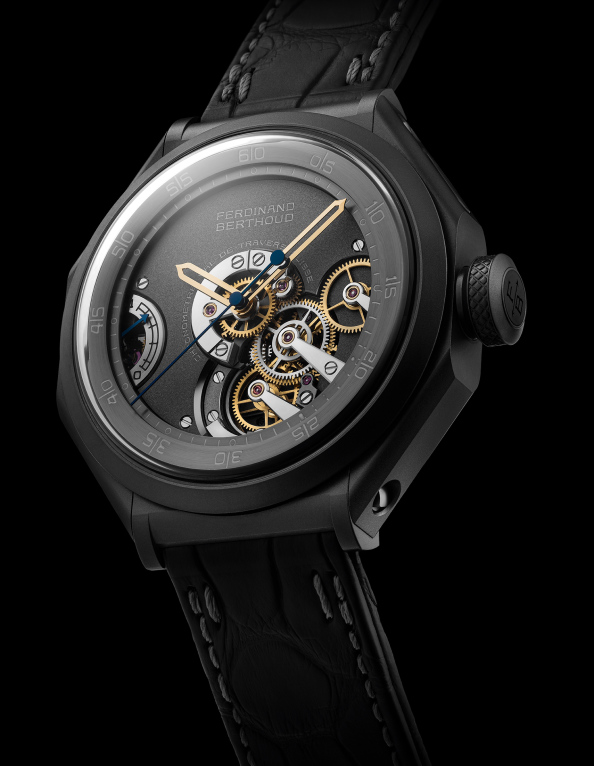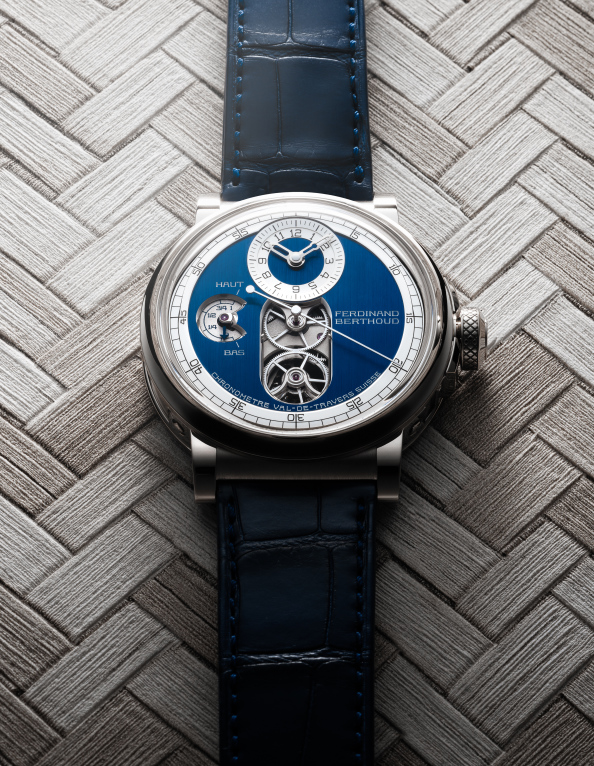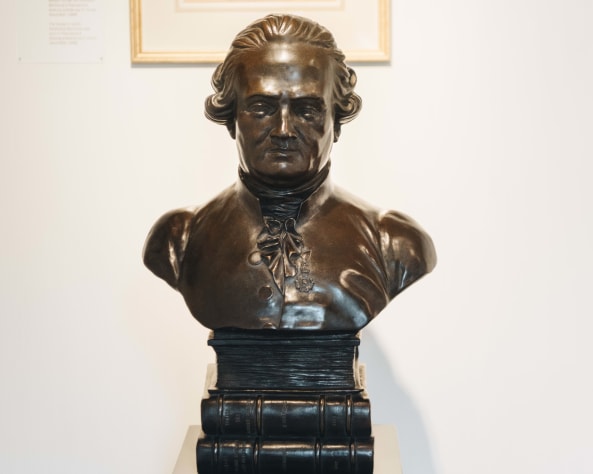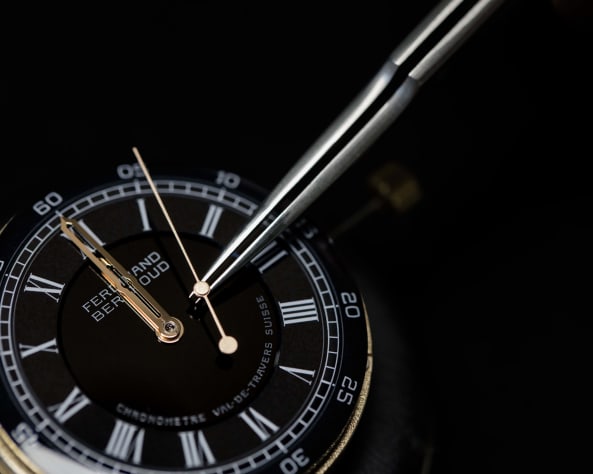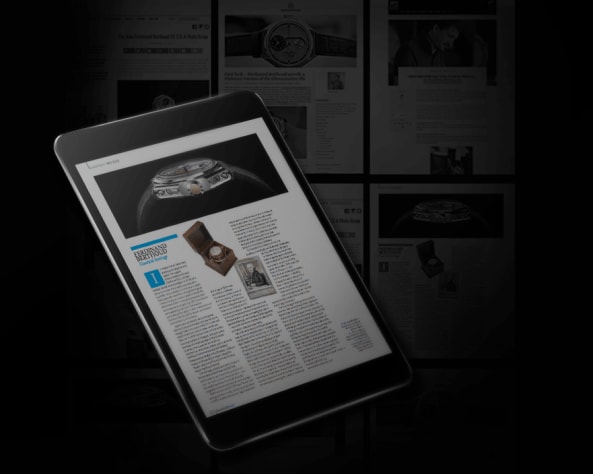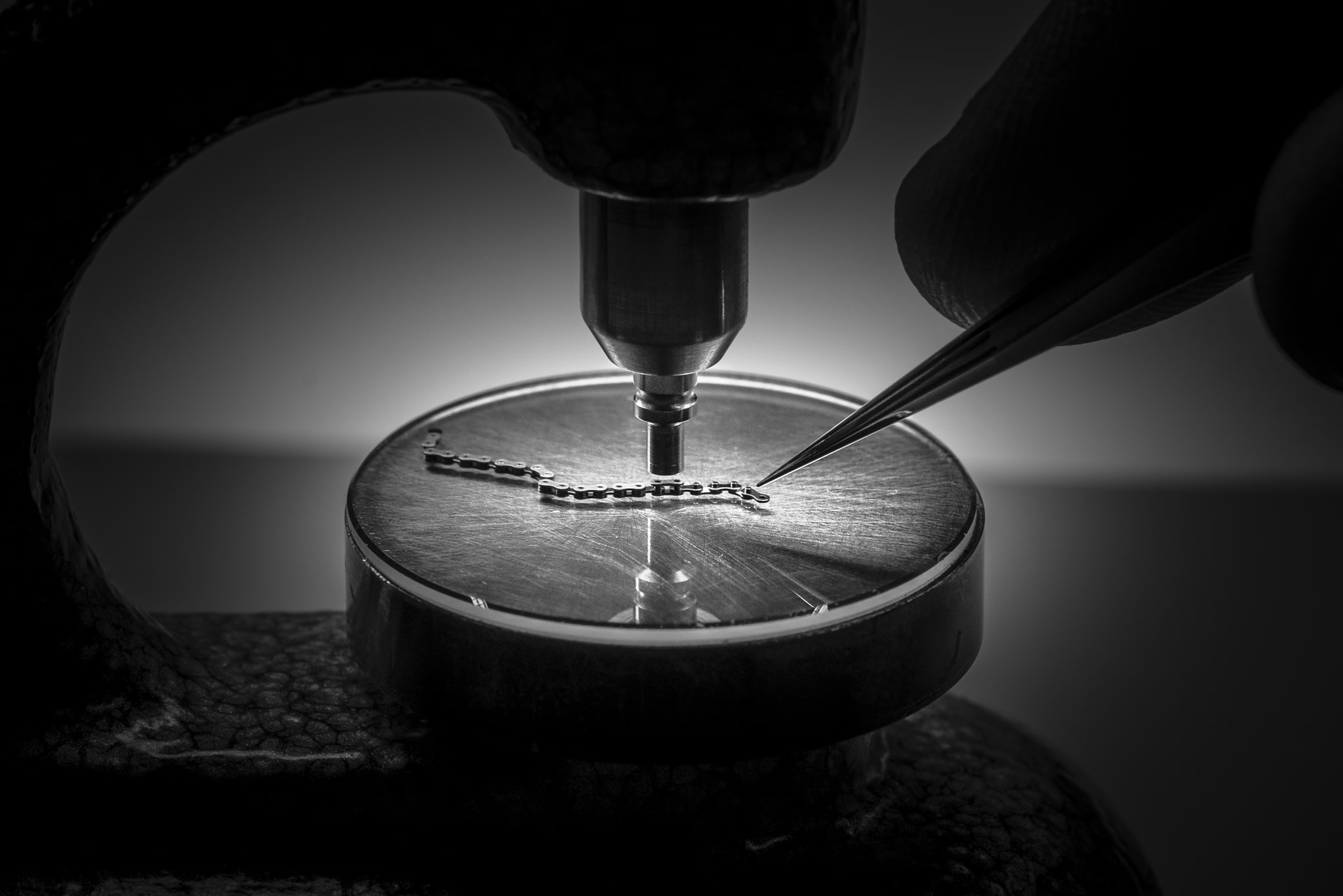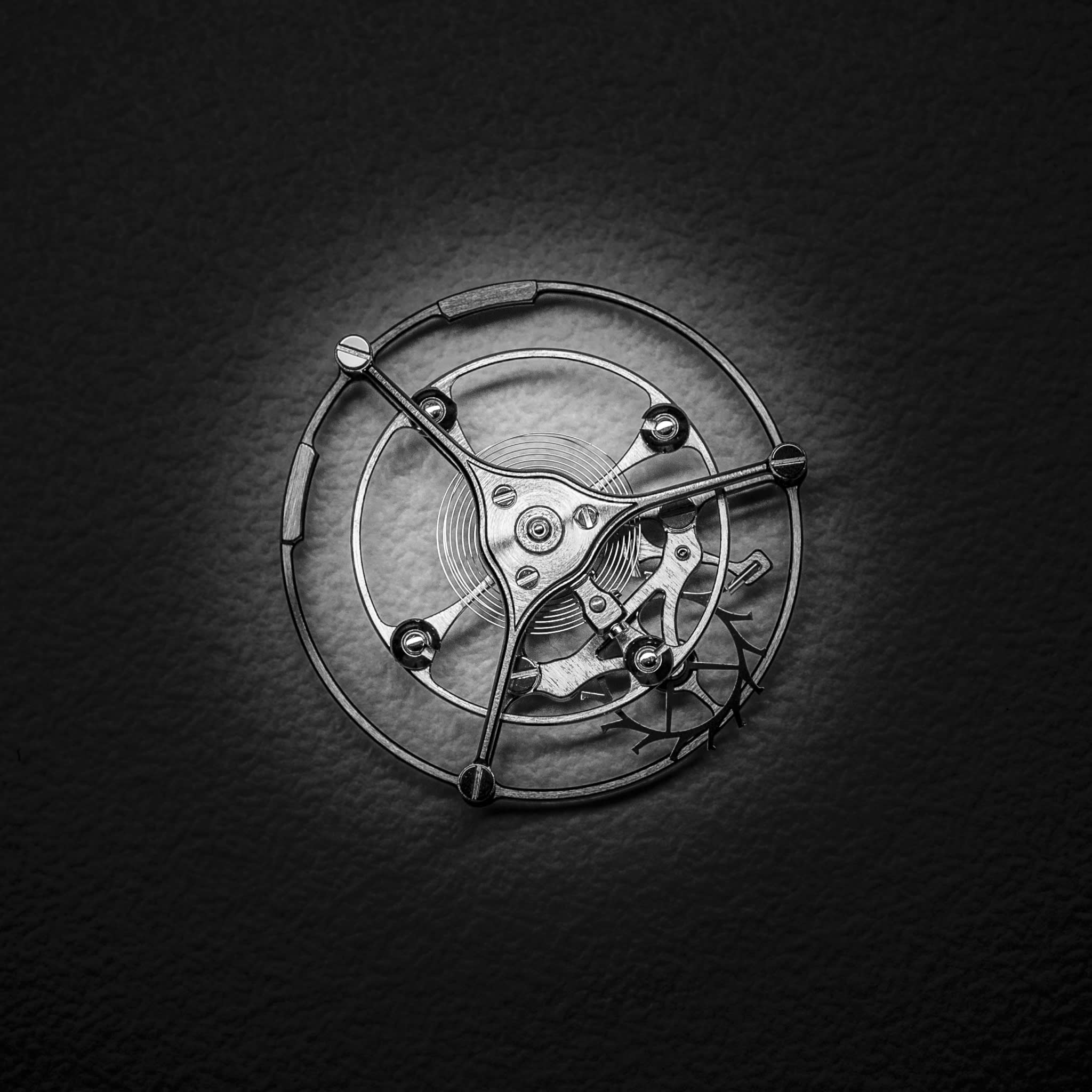
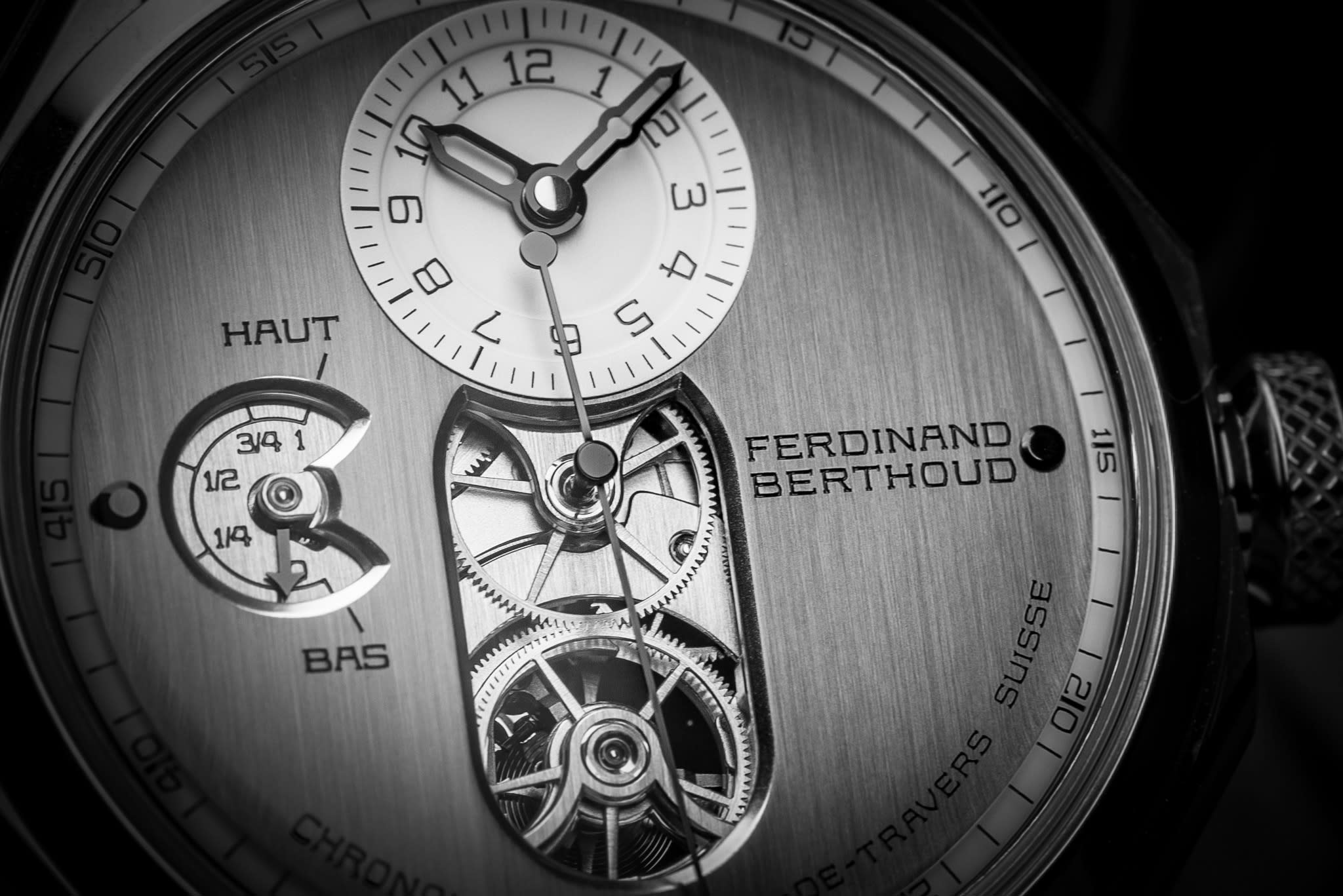
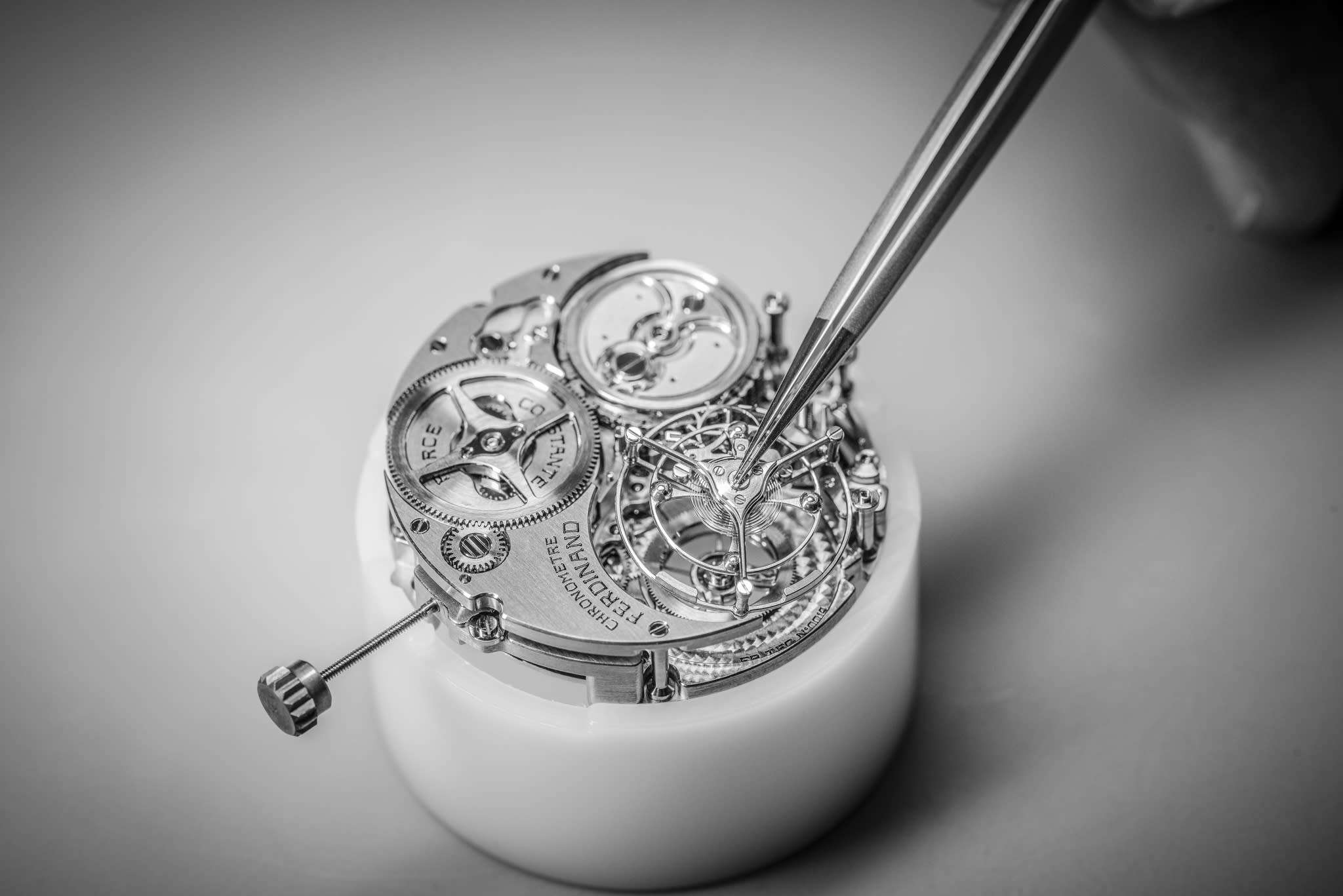
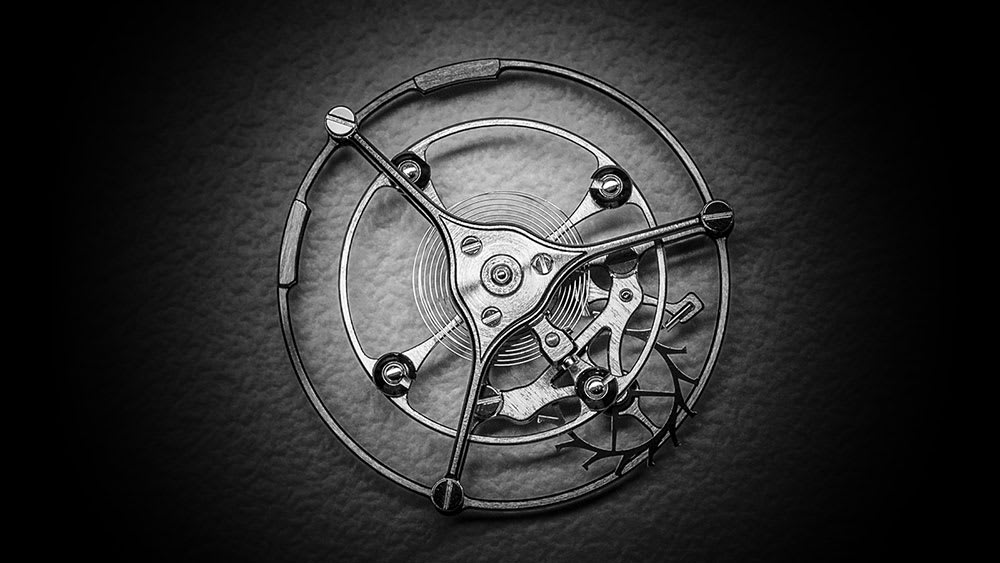
The initial brief – rethinking the tourbillon so that it better reflected Ferdinand Berthoud’s original innovative spirit – ended up producing an entirely different kind altogether. Four features distinguish this tourbillon from traditional designs: its construction, its size, its role, and its balancing.
Strictly speaking, in watchmaking the tourbillon is a regulating organ, not necessarily a complication. In view of this, Chronométrie Ferdinand Berthoud has incorporated it into the back of its movement, rather than placing it on the dial side.
The latter, meanwhile, displays only the indications attesting to the precision of the Chronomètre FB 1: hours, minutes, and above all the central large seconds hand, which alone bears witness to the daily precision of the timepiece. For Ferdinand Berthoud, “Horologist-Mechanic by appointment to the King and the Navy,” precision – and therefore the seconds display – was of prime importance; it is therefore only natural that it should be a dominant feature of the FB 1.
The choice of a tourbillon escapement followed a similar logic: a desire to endow the timepiece with the ideal technical conditions for controlled isochronous timekeeping. However, the FB 1’s tourbillon is like none other. Firstly, there’s the way it’s been put together; the design of the FB 1’s movement is anything but conventional. Usually, movements lie flat on a plate on which the gear train and organs are arranged, held in place by upper bridges. The construction of the Ferdinand Berthoud tourbillon is fundamentally different, marking a break with tradition: the cage is fixed to an arrow-shaped arch on the rear and guided by an openwork bridge visible from the dial side.
This construction is tied to a second distinctive feature of this tourbillon: its function. Indeed, in this piece, the tourbillon doesn’t simply mark out the seconds; it is the seconds hand – most probably the only tourbillon in the world to feature a central seconds hand. This arrangement is known as a “direct seconds” display, made possible only through the interaction of two perfectly identical, large-diameter (8.5 mm) wheels known as “solar” wheels: the central seconds wheel and tourbillon cage drive wheel. These too are visible on the dial side.
A third distinctive feature of the FB 1 tourbillon is its size. The cage has an outsize diameter of 16.55 mm – some 40% larger than conventional tourbillons. In conjunction with a low frequency of just 3 Hz (21,600 vibrations per hour), this size results in an enthralling and harmonious spectacle.
Fourthly, the FB 1 tourbillon – comprising 67 components, including a cage and three pillars made from titanium – features a distinctive dual balancing system. One part of this involves the balance wheel and is composed quite traditionally of four flyweights arranged at the cardinal points of the rim. In the finest watchmaking tradition, these are made from nickel silver, allowing the amplitude to be adjusted to the nearest micron. As to the second aspect, the cage is fitted with two 18-carat gold segments. These are movable, capable of being shunted a few tenths of a millimetre, thus allowing any imbalance of the escapement to be rectified and the mass of the tourbillon cage to be evenly distributed.
Fitted with a stainless alloy spring sporting a hand bent Phillips terminal curve, a large 12 mm-diameter balance wheel provides the finishing touch, allowing the FB-T.FC caliber to provide high precision and regularity, as certified by the Official Swiss Chronometer Testing Institute – a noteworthy feat for such a complex movement.
The FB 1 tourbillon can be viewed from many different angles: through the opening in the dial, the sapphire back, or the two windows on either side of the case. This visibility is not just a question of aesthetics; it is also a nod to history. Ferdinand Berthoud was first and foremost a scientist – a calling that entails disciplined methods, fully transparent experiments and protocols, and publication of findings. Indeed, the issue for him was a crucial one: calculating longitude. In the late eighteenth century, this was a vital prerequisite to the conquest of the high seas.
Did you know?
The central seconds hand on the FB 1, like that on the FB 1R, is much longer than traditional watchmaking styles dictate, measuring 24.68 mm from end to end. This was no accident on the part of Chronométrie Ferdinand Berthoud: it highlights the dominant position of the seconds hand for a timepiece that lays great emphasis on precision. In the Regulator (FB 1R) version, the diameter of the opening through which the cannon pinion passes has been made deliberately larger, with the sole aim of revealing the point on the movement where the hand rotates in its jewel bearing. The seconds hand itself boasts many distinctive features: these include its size, its delicate balance (revealed by the counterweight at the shorter end), its blind cannon pinion (wholly covering the shaft) and its curved tip. With a gilt or blue-tinted finish, it took a whole year to develop this component alone.
